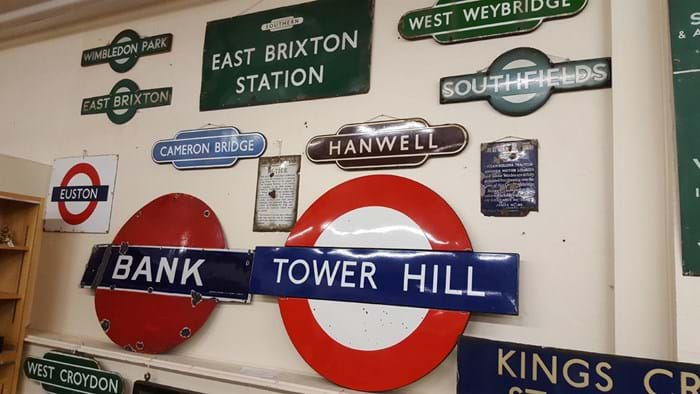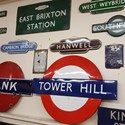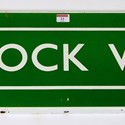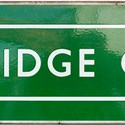The ‘Halt’ station opened by the Great Western Railway in June 1937 never did return. However, in 1969 it was renamed as simply Dilton Marsh and is still greeting stopping services today. But not steam trains.
Many railway stations were not so lucky to have the support of a man who later became a poet laureate as Dr Beeching’s axe loomed, and original maps abound with evocative names no longer existing.
At Chippenham Auction Rooms many of these memories from what many see nostalgically as the golden age of British railways will live on as a collection goes under the hammer.
Hundreds of rare railway signs, including many from those stations that disappeared in the 1960s and 1970s following the report by Dr Richard Beeching that prompted a major reduction in Britain’s rail network, are to be auctioned following the death of their owner.
This Wiltshire sale on November 10 includes more than 250 signs and many other items from railways, London Underground and London Transport dating from the early years of the 20th century up to the 1970s.
Dilton Marsh Halt is one of the most famous station signs, but others among the 14 representing lost stations are East Brixton in London, St Anne’s Park in Bristol, Cameron Bridge in Fife, Blaenrhondda in South Wales, Lydd on Sea in Kent and North Tawton in Devon.
The auction also includes railway staff uniforms, badges, clocks, lamps, platform furniture, advertisements and other equipment.
The collection has come onto the market following the death of its owner, an elderly former railway worker from Wiltshire. He is believed to have amassed the collection over six decades, storing most of the signs in the garage of his semi-detached house.
Principal auctioneer Richard Edmonds said: “This collection is mind-blowing. It’s the biggest of its kind I’ve ever seen. To put it into perspective, the most classic railway totem signs I’ve sold before at a single auction was two. Now I’ve got over 50 of them.
“What’s even more surprising is that the late collectors’ wife had no idea what he was doing. She called us in to review the small part of the collection he kept in their house. It wasn’t until we looked in their garage that we realised what she’d seen before was just the tip of a railway iceberg.”
Final estimates have not been set yet but Edmonds hopes the Dilton Marsh Halt will fetch at least £2000 and other 'disappeared' stations have four-figure values.
Railway signs of the times
The classic ‘totem’ design of railway station signs represented by this Dilton Marsh Halt example is often a popular choice at auction, especially for the rarer locations. The GW Railwayana saleroom in Worcestershire is a useful option for such lots. The November 18 auction includes nearly 20 examples of totem designs.
On August 17 Derbyshire auction house Hansons sold a Derby Midland totem sign, with “some rust, in need of restoration”, for a hammer price of £310 (estimate £80-120). Five days earlier, Lacy Scott & Knight of Bury St Edmunds took £380 (estimate £300-600) for a totem sign in BR green for the Kent Southern Region station Paddock Wood, with the catalogue note: “Would benefit from cleaning.”
In its July 15 auction, GW Railwayana sold several totem signs for four-figure sums. One, in dark green, from the former London Brighton and South Coast Railway Partridge Green station between Horsham and Shoreham, sold for £2900 hammer. It was “in excellent ex-station condition”.
Totem design
The totem design was introduced by the newly nationalised British Railways in 1948. Each station was to given a colour based on its region. The Gill Sans font invented by Eric Gill in 1926 was adopted by the British Railways Board for station signage, rolling stock lettering, timetables and publicity. It had been used by the London & North Eastern Railway since 1929 as the official typeface for publicity and posters. It later appeared on trains.
According to a blog on thebeautyoftransport.com, the “perfect marriage of font and sign design is why there’s a massive market in expensive bespoke replica station totems, and virtually no market in replica 1965-and-later station signs. It’s also why there’s such a thriving auction business for the original totems and other station signage.”
It adds: “The end came for the Gill Sans/British Railways signage combination in 1965 when BR’s new corporate identity (the one with the double arrow) was rolled out, with black ‘Rail Alphabet’ font on white background for station signage.”













